| |
Read 10QI
Home
The HoneyMan
Geoff Galliver |
|
|
|
10QI
Honey Bees
蜜蜂

far more interesting than you might imagine
Page Under Construction. Email bo@networkingnaturally.com if you would like to contribute to the content
Networking Naturally is not responsible for the content of external sites. Read more....
10QI Bumble Bees
10QI Bee Danger!
10QI The Bee Keepers Year
10QI Bees
10QI 1 |
Bees are insects and their bodies are constructed in the same way as all other insects
Head
Thorax
Abdomen
Wings
Six legs |

Workers exchanging food on comb image courtesy of http://www.vita-europe.com |
10QI 2 |
Bees have five eyes. Two large compound eyes and three simple eyes. Imagine looking through a complex kaleidoscope. This is the image a bee sees through its two eyes.
|
|
| 10QI 3 |
Like all insects, bees have different stages of development |
|
| |
1 Egg |

Bee egg laid by the Queen bee in a single cell |
| |
Lavae
|

Cells one with an egg and others with small larva
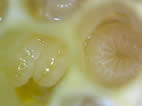
Twins? |
| |
|
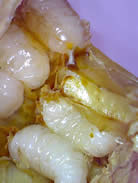
|
| |
Pupa |
|
| |
Adult |
|
10QI 4 |
Bees have two stomachs
One for pollen
One for nectar ...... to be confirmed
|
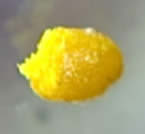
Pollen sac |
10QI 5 |
Bees are either solitary bees or social bees such as the honey bee, in England this is the Western Honey Bee
|
|
10QI 6 |
Bees communicate with each other using a special dance called a Waggle Dance. A bee returning from a place where there is an abundant source of pollen and nectar will do a special dance which tells the other bees where to go to find the plants.
It is believed that they not only tell the direction but also the distance to travel. |
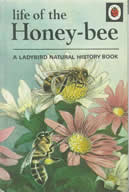
The Ladybird book Life of the Honey-bee. Great digestible information. Currently out of print but available second hand on Amazon
|
10QI 7 |
There are three types of honey bee in a bee hive.
1. The Queen
There is only one queen in a hive.
She controls the workers and drones using pheromones.
She can live for many years.
She lays eggs in a methodical order
Worker - female
Drone - male
http://www.biology-resources.com/insects-01.html |
|
10QI 8 |
A bee who finds food sources or a new home for a swarm is called a Scout |
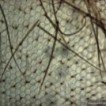
Drone cornea courtesy of www.vita-europe.com |
10QI 9 |
|
|
10QI 10 |
Bee Food |
|
| |
Bees visit flowering plants for
1 Nectar which is a sugar solution produced by the plants and in the case of flowers nectarys which produce nectar are generally at the base of petals
2 Pollen which is rich in protein
Flowers come in many shapes. To find out about Buzz Pollination check out this link
www.foxleas.com/flower_shapes.htm#top |
|
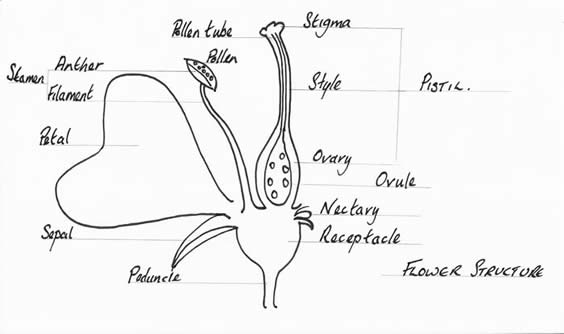
Image showing the parts of a flower including peduncle, sepal, petal, stamen, anther, filament, stigma, style, overy, pistil, pollen, ovary and nectory where nectar is produced
10QI Honey
10QI 1 |
Honey comes in a variety of colours
|
|
10QI 2 |
Honey should be heated to no more than 40° Fahrenheit. A higher temperature will kill off the magical enzymes which gives honey its remarkable properties. |
|
10QI 3 |
Honey heated above 40° is still usable and is known as Bakers Honey. |
|
10QI 4 |
Honey extraction
|
|
10QI 5 |
Special honeys must have pollen count of over x % before they can be called, for example, Clover, Acacia, Rape or Heather Honey
http://www.livestrong.com/article/298270-is-there-bee-pollen-in-honey/
|

Heather blossom and honeycomb
|
10QI 6 |
Some Honey crystallizes very quickly, for example Honey from Rape Plants.
|
|
10QI 7 |
Some honey is so runny it may never crystallize such as Borrage.
|
|
10QI 8 |
Heather honey is thixotropic – its gel state when agitated (stirred) becomes liquid; the usual test, apart from its appearance and strong lovely distinctive smell, is to remove the lid and invert the jar – if it is unstirred heather honey it will remain in the jar – if its not then you will have a sticky mess to clear up off the floor!!
http://www.benefits-of-honey.com/pure-honey.html |
|
10QI 9 |
Weird Honey
BBC 2 Natures Weirdest Events, Chris Packham looked at the phenomenon of strangely coloured honey. Honey producers in Ribeauville, France found hives containing brightly coloured honey including green and blue in 2012.
Once a bee finds a good source of something sweet it will return to the hive and do a waggle dance which will give all the bees the directions to find more supplies from the same source.
In the case of the Ribeauville bees the directions took them to a waste reprocessing plant dealing with the husks of M and M sweeties.
In New York roof top bee keeping is a popular pastime and Andrew Cote, founder of the New York City Beekeepers Association, is a fourth generation bee keeper
http://www.andrewshoney.com/The%20Beekeeper.html
Andrew is also founder of Bees Without Borders, a project taking the art of bee keeping around the world to less developed countries.
When asked about the possible cause of brightly coloured green honey, Andrew suggested that anti freeze could be the ingredient. Incredibly sweet and with an irresistible scent, anti freeze is not apparently toxic to bees. Andrew cautioned against eating any brightly coloured honey with an unknown source.
However bright red honey was a New York honey speciality with bees consuming the run off from a Maraschino cherry factory.
http://www.bbc.co.uk/iplayer/episode/b03nt1hc/sign/
Natures_Weirdest_Events_Series_3_Episode_2/ |
|
10QI 10 |
|
|
10QI Bee Hive
10QI 1 |
Bee Hive Construction
The modern bee hive is relatively new in design given that man has harvested honey since antiquity
|
|
10QI 2 |
Lorenzo Lorraine Langstroth (1810–1895) patented his Langstroth Bee hive in 1852.
Frames
The significant difference between Langstroths design and other bee hive design is the distance allowed between frames. This is now referred to as bee space. There is sufficient room for the worker bees to create honey comb either side of the suspended frames but not too much as to allow the bees to build further combs or seal the gap with propolis.
Hive Stand
To protect the hive from damp it is raised from the ground. This can be integral to the unit or simply by using bricks or other materials capable of bearing the weight of the hive.
Floor
Bees enter the hive at the base or floor of the modern bee hive
Brood box
Above the floor is the brood box. This contains removable frames within which sheets of preformed wax are suspended. These sheets speed up the formation of the comb into which the honey is stored and the eggs for new bees laid
Queen Excluder
The Queen Excluder is a mesh or grid of wires which are large enough for the workers to pass through but which are too small for the queen to pass through to the next layer of the hive.
Honey Box or Super
The Honey box or super contains further rows of combs. The worker bees will continue to produce honey combs and store honey in this layer even though it cannot be accessed by the Queen Bee.
Roof
It is important that the bee hive stays dry and a waterproof roof helps to protect the hive from the weather.
In the wild, swarms of bees who form nests in exposed places such as trees, are not likely to survive the winter.
|
|
10QI 3 |
|
|
10QI 4 |
|
|
10QI 5 |
|
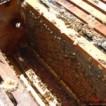
inside a brood box showing sealed brood and woodpecker hole courtesy of
www.vita-europe.com |
10QI 6 |
|
|
10QI 7 |
|
|
| |
Abbé Emile Warré (1867-1951)
In draft
Nadiring - adding a new box at the bottom of the hive rather than disturbing the top of the hive and opening up the roof and disturbing the air, temperature etc
The Warre Store is a commercial website based in north america. It has some very interesting information about Warre beekeeping as well as promoting their product.
http://www.thewarrestore.com/superingawarre.htm
http://www.thewarrestore.com/videotutorials.htm
|
|
10QI 8 |
|
|
| |
Trees - Natures natural home for Bees
In the wild, bees live successfully using hollowed out trees as homes. The flowers of trees provide an abundant source of nectar and the resin is used by the bees to make propolis which the bees use to seal gaps and line cavities (to make the hive waterproof - needs confirmation).
The Langstroth hive makes farming bees convenient and easy for humans. However, there is evidence from fifth century Russia that they used specific tree beekeeping tools to harvest honey from trees.
In southern Urals in Russia more than 700 tree hives are still managed using traditional techniques and not a chemical in sight!
In Hampshire John Haverson collects swarms of bees and is part of the swarm liaison team. If you have an unwanted swarm contact John by visiting http://hampshire.naturalbees.net/p/swarm-advice.html
|
|
10QI 9 |
Cork and Plastic Hives
Pastel Painted Hives
On the continent bee hives are often painted in bright colours. Whilst they look very pretty, the colour is not important to the bees as they do not locate the hive by sight. |
|
10QI 10 |
Solitary Bee Hives
Social Bee hives need a lot of space and are not suitable for a small domestic garden in urban areas.
However, you can provide super solitary bee hives in even the smallest of patio gardens. Easy and cheap to construct, they will soon attract bees seeking a small hole into which they can lay their eggs.
An interesting twist on this is a construction which uses clear plastic tubing and a hinged roof so that the live cycle can be viewed.
This link is to a YouTube video
http://www.youtube.com/user/solitarybee?feature=watch
Thank you 'solitarybee'
|
|
10QI Honey Medicinal
You should consult your doctor or medical practitioner if you or anyone in your care is unwell.
Honey can cause a severe allergic reaction.
Honey should not be fed to babies under 12 months .........read why.....
http://www.telegraph.co.uk/health/healthnews/7797246/Parents-warned-over-feeding-honey-to-babies.html
10QI 1 |
Honey is brilliantly digestible and an ideal source of energy for young and old when they are unwell. |
|
10QI 2 |
There are many receipes combining Honey and Cinnamon |
|
10QI 3 |
Manuka Honey comes from New Zealand. The bees producing this honey collect pollen and nectar from the Tea Tree plant. The plant has many important properties and some of these are conferred to the Manuka honey. It has various medicinal uses including being used for the treatment of uclers
http://www.webmd.boots.com/vitamins-and-minerals/manuka-honey
http://www.benefits-of-honey.com/manuka-honey.html |
|
10QI 4 |
Lemon and Honey |
|
10QI 5 |
|
|
10QI 6 |
|
|
10QI 7 |
|
|
10QI 8 |
|
|
10QI 9 |
|
|
10QI 10 |
|
|
10QI Beeswax
10QI 1 |
Honeycomb |
|
10QI 2 |
Candles |
|
10QI 3 |
Polish
|
|
10QI 4 |
Sealing Wax |
|
10QI 5 |
Writing Tablets |
|
10QI 6 |
Cosmetics |
|
10QI 7 |
Gold Offerings to the Gods
In Dr Jago Coopers BBC4 documentary on the subject of Eldorado and the Lost Kingdoms of South America, he looks at Tunjo a cast metal object found in central Colombia. These Muisca metal artefacts were used as offerings to the gods. They were made of Tumbaga, an alloy of gold and copper.
It has been shown that these objects were made by the 'lost wax' technique and more importantly, the native Columbians used the wax produced by two different types of bees to form the wax template. Each wax having a distinct property, (1) to form the flat base and (2) to form features.
A Tunjo typically less than 10 cm in height and would have been left on the ground as an offering to the gods.
The British Museum has examples of Tunjo
http://www.britishmuseum.org/research/collection_online/
collection_object_details.aspx?objectId=476790&partId=1
If you travel to Bogota visit the El Museo del Oro and look for Muisca's golden raft.
|
|
10QI 8 |
Moustache Wax - Hercule Poirot |
|
10QI 9 |
Weaponry |
|
10QI 10 |
Batik Fabric Dye |
|
10QI Bumble Bees and Relatives
The Amazon Catastrophe
10QI 1 |
The Amazon Catastrophe
June 2014. Pre-packing for a trip to Vaison La Romaine France, a rush order was placed for four books in last minute readiness with a distinct lack of attention to detail. The first two arrived like London Red Buses:
- Provence and the Cote D’Azur Eyewitness Travel Guide from Dorling Kindersley – London New York – Stuttgart first published in 1995 by Dorling Kindersley Limited and printed in London
- The second – which must have been several Amazon searches and numerous web pages later – Top 10 Provence and The Cote D’Azur Your Guide to the 10 Best of Everything (I missed the fact that this too was a Dorling Kindersley book containing much of the first book but in a condensed form. This time Published in 2002 and printed and bound in China.
Following the theme of this article and wishing to extend the subject of Honey Bees to Bumble Bees, the third to arrive was a book on bumble bees, only it was not a book but a laminated poster with images of the 28 most common British Bumble bees with a little text.
Finally, the last book arrived, Dave Goulson’s Sunday Times bestseller A Sting in the Tale – the sting for the beginner wishing to explore Bumblebees and to be able to identify them was there were no illustrations whatsoever other than the twelve unidentified bees on the cover, one of which may be the UK extinct short haired bumble bee successfully exported to New Zealand in January 1885 but I may never know….
For those with an interest in all things green and saving the planet, there is a Gershwin connection. Gershwin is an African clawed toad who is completely aquatic. He has lived in a tank for 10 years in his second home having outgrown his first owner’s tank where he lived for the previous 7 years – having consumed all the fish and his companion toad. His saving grace is that he sings – or the aquatic equivalent of communicating – when Spring arrives or he hears Linda’s voice. He also torments Mischa the less than intellectual cat but that is a distraction.
At the turn of the 20th century African clawed toads were used by Lancelot Hogben for scientific experimentation and more usefully as a pregnancy testing kit. Urine from a female human who was thought to be pregnant was injected into a toad. If the hormones of a pregnant woman were present in the sample injected, the toad would in a few days produce eggs – thus providing a positive test result for the mother to be.
Modern chemical methods have been devised and though many of the frogs were kept for ongoing experiments, a vast number were surplus to requirements and released locally into the wild throughout our planet.
It is suggested that the release of these toads has been the cause of the decline/extinction of local frogs and toads who have succumbed to Batrachochytrium dendrobatidis, a chytrid fungus carried by the African clawed toad who is immune to the same.
In the same way as the Spanish conquistador invaders introduced measles and chicken pox into the South American indigenous populations killing millions following their arrival in 1500’s, so the medical research off casts appear to have had the same negative impact on naturally occurring amphibia.
Buzz Pollination is the latest way of working with nature to work towards producing great crops at a low cost – or is it? In a response to the alarming decline of the honey bee and as a method of providing a cheap alternative to employing humans to physically pollinate tomato and other commercially grown crops, a Dutch company have developed a method of producing Bumble Bee Hives in a box. These have been shipped globally with little or no regulation.
There is little doubt that the results are highly successful. Curiously it is said that tomatoes pollinated by Bumble bees are tastier than the same pollinated by men. Quite how this could be has yet to be explained.
Is this seemingly innocent ‘working with nature’ commercial activity harmless?
Read Professor Dave Goulson’s view as a keen naturalist and expert scientist in his field.
Neonicotinoids - The real Sting in the Tale
Since completing his novel, Professor Dave Goulson has continued his research into the decline of the Bumble bee and is currently actively working to raise awareness of the impact of a relatively new form of pesticide known as Neonicotinoids. As a systemic pesticide, it is applied to the coatings of seeds and ironically has been found in plants grown in packets of ‘Bee Friendly Plant’ seeds.
Though the industry producing and selling this product throughout the planet argue aggressively that the benefits of this chemical balance out the disadvantages, there is little doubt that the toxicity of this pesticide is clearly demonstrated when a scientifically carried out experiment which sees 85% of queen bees dying following exposure to neonicotinoids.
Throughout the world neonicotinoids are being applied to the earth year on year, building up a legacy of poison which ultimately will affect every living creature – including of course humans.
It remains in the soil and is drained into our waterways, rivers, seas and oceans.
To be continued…….
|
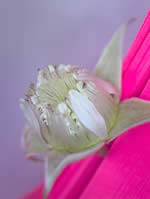
Raspberry flower showing residual white petals |
10QI 2 |
Koppert commercial Cardboard bee hives |
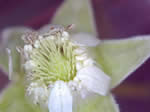
Raspberry flower with pistils |
10QI 3 |
Gucci use bumblebees as a motif.
Florence Welch wears Gucci watch while on tour with her band Forence and the Machine. Her chosen model uses bumblebees, stars and hearts as hour markers on a guilloche dial.
Guilloche is a repeating machined pattern of frequently curved intersecting lines eminating from a centre point.
Guilloche patterns are also seen hand crafted on Faberge eggs. |
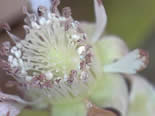
Raspberry flower half pollinated |
10QI 4 |
|
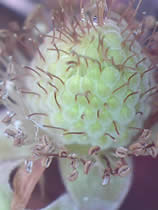
Raspberry flower fully pollinated and green fruit plumping up. |
10QI 5 |
|
|
10QI 6 |
|
|
10QI 7 |
|
|
10QI 8 |
|
|
10QI 9 |
|
|
10QI 10 |
http://www.bbka.org.uk/ |
|
10QI History
10QI 1 |
Antiquity |
|
10QI 2 |
Chinese |
|
10QI 3 |
Egyptians |
|
10QI 4 |
Monks |
|
10QI 5 |
|
|
10QI 6 |
Straw Skeps
|
|
10QI 7 |
Eight cloomed wicker skeps
These were made in March 2009 for a film company who wanted them for the Robin Hood movie now circulating.
In the film Friar Tuck (the beekeeper) throws skeps of bees into a building where people are hiding.
This is only the first batch of the skeps made for the film.
Getting all that cow dung dry in cool damp weather was a problem .....
http://www.martinatnewton.com/page2.htm
|
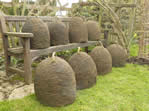 |
10QI 8 |
|
|
10QI 9 |
|
|
10QI 10 |
|
|
Lorenzo Lorraine Langstroth
http://openlibrary.org/books/OL7148643M/A_practical_treatise_on_the_hive_and_honey-bee
http://www.archive.org/stream/practicaltreatis00languoft#page/32/mode/2up
10QI Bee Future
10QI 1 |
|
|
10QI 2 |
|
|
10QI 3 |
|
|
10QI 4 |
|
|
10QI 5 |
|
|
10QI 6 |
|
|
10QI 7 |
|
|
10QI 8 |
|
|
10QI 9 |
In a news article entitled Plight of the shrinking Bees Gemma Baron, a scientist from Royal Holloway, University of London explained that larger bumblebees are more effective at foraging than the smaller off spring..
A study suggests that bumblebees are shrinking as a result of being exposed the pyrethroid pesticides.
Pyrethroid is a natural organic pesticide produced from the flowers of Pyrethrums (Chrysanthemum). Although 'natural and organic' these pesticides are very toxic to insects - including bees.
The concern is that the large bumble bee is more effective at collecting pollen from flowers vital to the food chain than smaller bees and the reduction in their size could have serious consequences in the future.
|
|
10QI 10 |
http://www.bbka.org.uk/ |
|
10QI Bee DANGER!
10QI 1 |
|
|
10QI 2 |
|
|
10QI 3 |
|
|
10QI 4 |
|
|
10QI 5 |
|
|
10QI 6 |
|
|
10QI 7 |
|
|
10QI 8 |
|
|
10QI 9 |
Lucy King has carried out reseach on East African elephants and discovered that they are wary of bees and if an elephant comes across bees the individual will call to the rest of the troup to make them aware of the danger.
Lucy used this knowledge and attached traditional beehives to fences protecting crops on farms in Kenya.
The project proved successful in deterring HEC. Building on the initial success, the concept was further developed to include a more contemporary Lanstroth bee hive design. As a consequence, not only do the farmers deter elephants from destroying their crops, they also generate a profit from honey production and there is evidence that the crops are more effectively pollinated by the additional bees present in the area.
For detailed information about Lucy and her project visit
http://elephantsandbees.com/
|
|
10QI 10 |
http://www.bbka.org.uk/ |
|
10QI The Bee Keepers Year
Spring
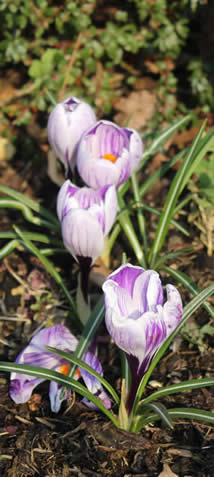
Who was it who said.....
"Spring is spring, the grass is 'ris,
I wonder where the birdy is?"
Well, you only have to go outside to note that spring has well and truly arrived and the birds have certainly started nesting, But more importantly - to me at least - autumn sown oil seed rape is now in flower and my bees are really busy bringing in both a brilliant yellow pollen and nectar too.
The season for beekeepers really started last September/October. In order to get a really strong hive with lots and lots of bees emerging from the oncoming winter, the need was to ensure they had plenty of food to survive for at least four months. Everyone must surely know by now that recent winters have not been very harsh and whilst this may be a welcome factor for many of us, for beekeepers it signals a special problem. The reason for this apparent paradox is that during cold winters, the bees metabolism slows clown and they cuddle up together to keep warm; consequently, they don't eat too much of their stored honey, which means their supplies last until the first nectar of spring becomes available. During the warmer winters however, the bees will fly on bright warm sunny days and therefore eat more of their stores to fuel these excursions. Now, if round about late January or early February we get a prolonged cold snap, the bees once again cuddle up for warmth - but the remaining food supply is too far away from the nest for the bees to reach and so there is a strong possibility that the bees will die of starvation, surrounded by food. The experienced beekeeper, aware of the possibility of hives becoming starved out, will closely monitor the weight of all his hives during the winter months and will feed syrup or candy at the earliest opportunity.
Did you notice how long the crocus flowers were in bloom both last year, especially, and again this year? Normally, when a crocus blooms and a bee pollinates it, that's it, job done and it flops over! However, over the past two winters when the crocus have been in bloom, the air temperature has been quite low and so the bees didn't fly - hence pollination was delayed and the flowers lasted longer than usual. Incidentally, I never told my neighbours the
true reason why their crocus didn't last very long!
So, the season is now well and truly underway. Pollen from many sources is being gathered to feed the emerging and newly born bees and hopefully the rape will crop well if we get a stretch of warm weather. Following the autumn sown rape as a nectar source will be the flowering field beans and then all of a rush we'Il get spring sown rape in blossom in June/July, sweet chestnut and all the garden flora and lime trees. The yield of honey from a hive depends on several factors, the most important being the need for a really strong colony, good weather, a good location for the apiary and finally, good management practice by the beekeeper.
So, if you want high quality honey, what better place to get it than from your local beekeeper? In N.E. Hampshire there are local Beekeeping Associations in Fleet, Basingstoke and Alton.
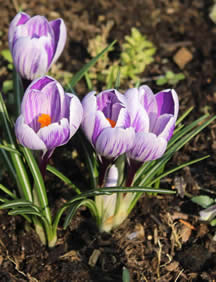
Geoff Galliver
Keeper of Bees Odiham
Visit http://www.fleetbeekeepers.com/index.html
Summer
Autumn
Winter

If you have a comment or would like to submit content
Send an email to
bo@networkingnaturally.com
Networking Naturally is not responsible for the content of external sites. Read more.... |
|
|
|
New
'MicroRead'
MicroReadLatest
Micro Images of Crocus flowers
Copyright Bo Nightingale
March 2013
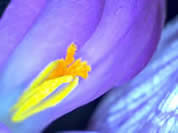
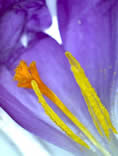
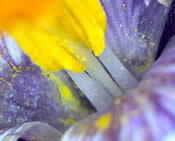
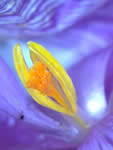
Micro Images of Spring flowers
Copyright Bo Nightingale
May 2013
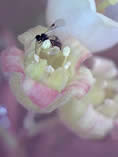
Black Current flower with insect
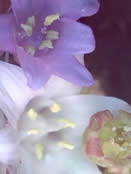
Bluebell, Whitebell and current.
See Bluebell pollen and stigma
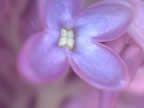
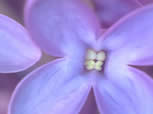
Two images of lilac flowers. The top flower has four closed anthers, the bottom has two anthers releasing pollen
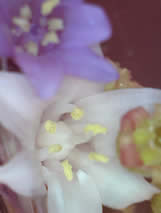
Whitebell pistil anther and filaments
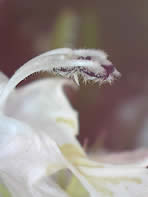
Dead nettle filaments and anther
Micro Images of Summer flowers
Copyright Bo Nightingale
June 2013
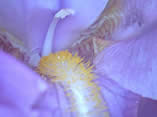
Iris folded back to reveal anther and filament
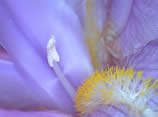
A bumble bee has visited this flower and the pollen has been released
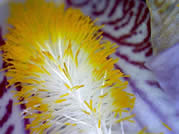
Iris - Irrisistible to some bees!
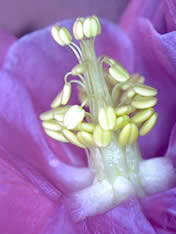
Aquilegia flower just opened
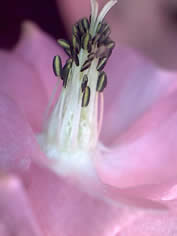
Aquilegia flower pollinated
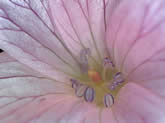
Native Geranium - Cranes Bill
Stunning striped anther
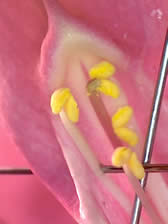
Snap Dragon - Antirrhinum
Sewing pins separate the pistil from the stamen
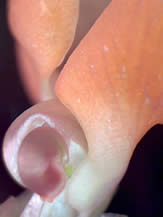
Runner Bean flower
|
|






















